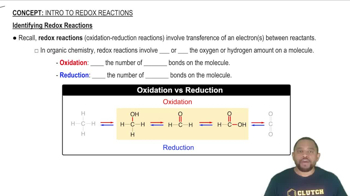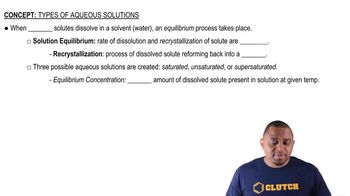Classify each of the following unbalanced half-reactions as either an oxidation or a reduction. (d) SbCl4-(aq) → SbCl6-(aq)
The following two redox reactions occur between aqueous cations and solid metals. Will a solution of green cations react with solid blue metal? Explain.
(a)
(b)
 Verified step by step guidance
Verified step by step guidance
Verified video answer for a similar problem:
Key Concepts
Redox Reactions

Electrochemical Series

Aqueous Cations and Solid Metals

Assume that the electrical conductivity of a solution depends on the total concentration of dissolved ions and that you measure the conductivity of three different solutions while carrying out titration procedures: (a) Begin with 1.00 L of 0.100 M KCl, and titrate by adding 0.100 M AgNO3. (b) Begin with 1.00 L of 0.100 M HF, and titrate by adding 0.100 M KOH. (c) Begin with 1.00 L of 0.100 M BaCl2, and titrate by adding 0.100 M Na2SO4. Which of the following graphs corresponds to which titration?
Based on the positions in the periodic table, which of the following reactions would you expect to occur? (a) Red+ + Green → Red + Green+ (b) Blue + Green+ → Blue+ + Green (c) Red + Blue+ → Red+ + Blue
How many moles of solute are present in each of the following solutions? (a) 35.0 mL of 1.200 M HNO3
How many moles of solute are present in each of the following solutions? (b) 175 mL of 0.67 M glucose (C6H12O6)
How many grams of solute would you use to prepare each of the following solutions? (a) 250.0 mL of 0.600 M ethyl alcohol (C2H6O)
